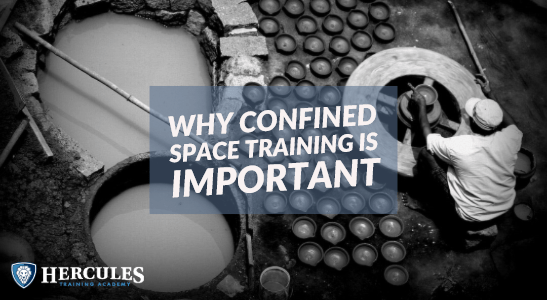Last Updated on March 10, 2024 by admin
Introduction.
Confined spaces can be dangerous places to work, but with the right precautions, you can avoid injury. Why it’s important to have access to confined space training and what hazards you might encounter when working in them. By the end of this article, you’ll be ready to start your first job as a certified professional in hazard management!
What is a confined space?
A confined space is defined as a space with limited entry or exit points, is not designed for continuous occupancy, and has limited or restricted access to fresh air. It can also be defined as a space that has limited or no ventilation and means of access to emergency services.
If you’re wondering why this matters, it’s because OSHA requires that employers make every effort to ensure employees are protected from potentially dangerous situations like these. To do so, they must train workers on how to recognize such hazards and how best to manage them.
Why is confined space training important?
Confined space training is important for several reasons:
- It can save lives.
- It can prevent injuries.
- It can help you avoid legal issues with the government and other parties.
- Confined space training will help you prevent loss of productivity at work due to injuries or litigation against your company.
What are the hazards of confined space entry?
You’ve probably heard of confined spaces. They’re found in most workplaces and many homes, but you may not know that entering a confined space can be dangerous if you don’t know what you are doing. When people first enter a confined space, they are often unaware of its hazards. Suppose a worker enters a stuffy room, for example, and finds himself unable to breathe because of poor air quality or lack of oxygen. In that case, he could become disabled or die from asphyxiation within minutes.
So how do you protect yourself from these dangers? The answer lies in training! Training will help workers understand the risks associated with entry into enclosed areas (such as tanks), how best to manage those risks via appropriate PPE (personal protective equipment) usage and other precautions such as buddy checks.
Examples of confined spaces.
Confined spaces are typically defined as small, enclosed areas with poor ventilation and limited entry or exit possibilities. Confined spaces can be found in a variety of industries, but here are some examples:
- Underground storage tanks
- Grain silos (with the grain)
- Sewers (with wastewater)
Confined spaces can be dangerous places to work, and it’s important to know how to prevent injuries.
Confined spaces can be dangerous places to work, and it’s important to know how to prevent injuries. A confined space is an area that:
- It is not designed for continuous worker occupancy but for one or more persons to occupy it for a specific job.
- Has limited ventilation, clearance, and access.
- It may have uneven surfaces, sharp edges, or corners and be wet or contain hazardous materials.
The hazards of confined space entry can include:
Suffocation – Lack of oxygen makes it difficult for a person’s lungs to absorb oxygen from the air around them, resulting in a lack of breathability and possible death through asphyxiation within minutes. This type of hazard tends to be present when you’re working inside tanks where there is no room for fresh air exchange because they’re closed-off containers filled with gas which means if something goes wrong during your job. Chances are pretty high that this could happen since there’s no place else left where things could go wrong except maybe outside, but since nobody wants their face covered in toxic gases, who’d want to do something like going outside anyway?
Conclusion
The bottom line is that confined space training is essential. It can save lives and prevent injuries. The most important thing you can do is ensure you have the correct equipment, know what you’re doing in a confined space, and understand how dangerous these areas can be.







